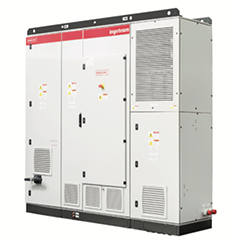The evolution of technology within the wind sector has experienced a very rapid development during the last years. Every year the most important manufacturers present new turbines. The price at auctions has gone hand in hand with this development, experiencing drastic reductions. Thus, manufacturers have upgraded the power rate of their newest turbines trying to reduce the Levelized Cost of Energy (LCoE).
Introduction
This rapid evolution, added to the impulse of Full Converter (FC) topology and the possibility of using different voltage levels (low and medium voltage) unfolds a complex debate about which topology will lead the wind market in the future.
In parallel, the semiconductor market has experienced a similar evolution providing new chips with improved features that have opened even more the possible solutions.
Thereby, the objective of this document is to show a general view of the capabilities of each topology in order to detect the advantages for a new design. The main topologies within the market will be assessed: DFIG (DFIG), Full Converter Low voltage (FC LV) and Full Converter Medium voltage (FC MV).
In any event, it has to be said that the final topology selection depends on lot of factors of the whole system. Site emplacement (wind class), price of the energy and the power range are the main ones. The great variability on these factors explains the fact that several solutions coexist nowadays.
DFIG wind turbines
For the last two decades, Doubly Fed Induction Generator (DFIG) converters have been the most extended topology in the power range of 2.XMW. The low power of the converters, the efficiency and the overall low cost of the drivetrain system have made this topology almost a standard in low power and low voltage wind turbines.
Taking advantage of the main benefits of the DFIG topology, the wind power penetration into the power generation system has substantially increased during the last twenty years. In this sense, and with the increasingly importance of the power quality and grid stability, the products have evolved and are already capable to be installed in designs of up to 6xMW in 1 power conversion line configuration (PCL).
The main constraint of DFIG wind turbines are mainly the FRT events. These are usually caused by short circuits produced in the grid. Generation systems must be able to keep connected during these events in order to support the grid stability.



























